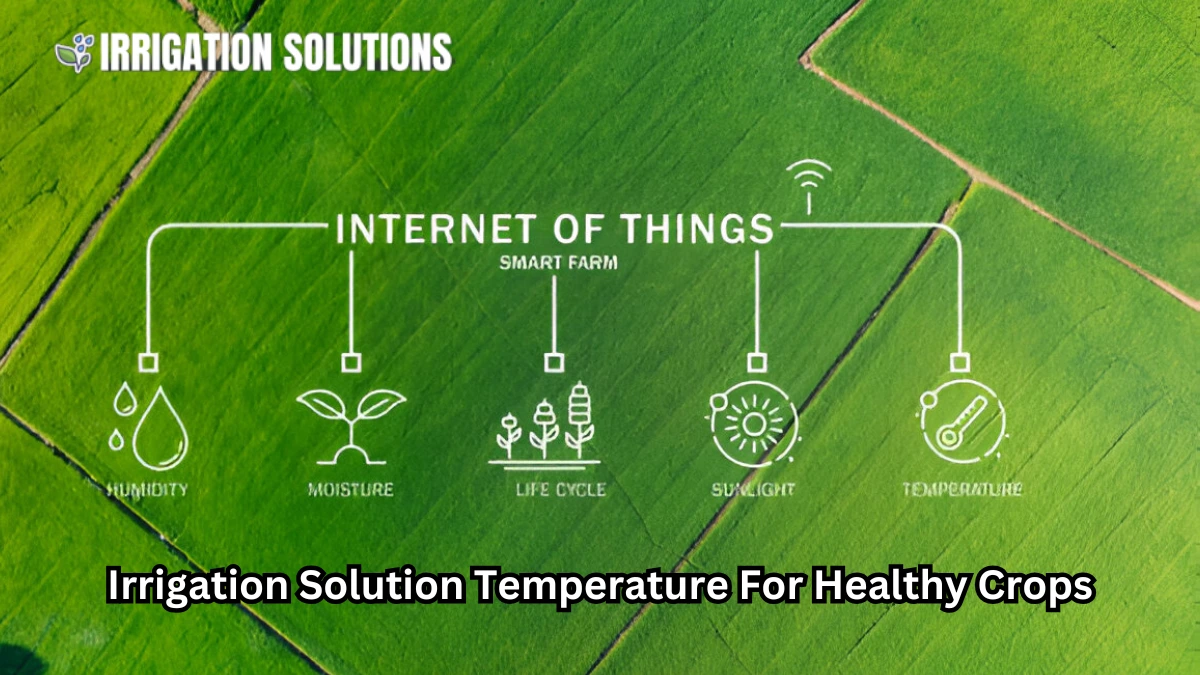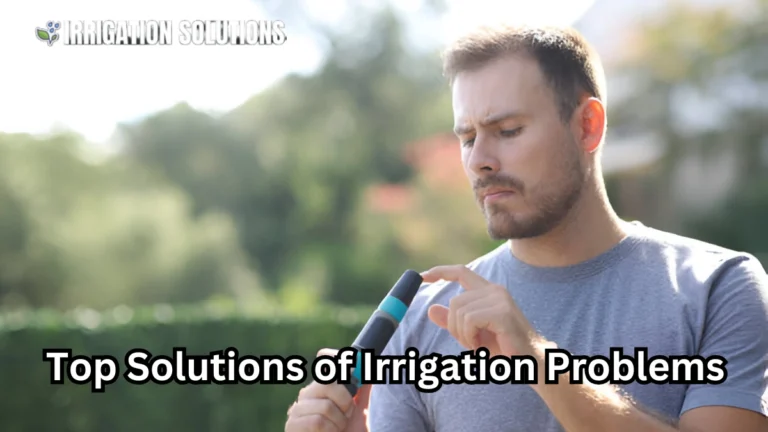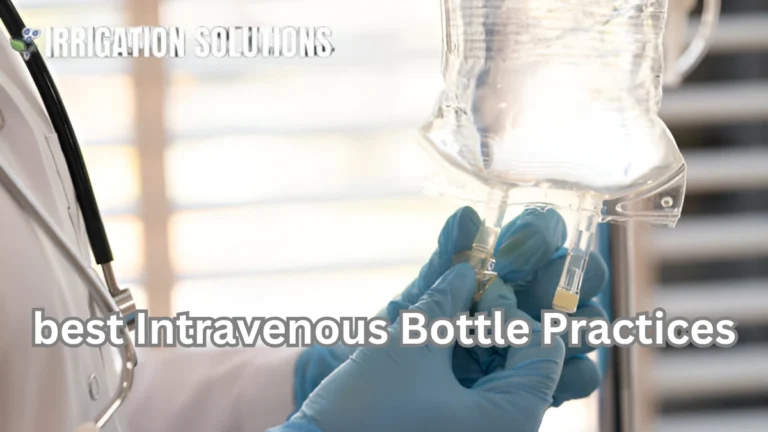irrigation solution temperature for Healthy Crops

When it comes to maintaining a healthy garden or agricultural land, managing irrigation and irrigation solution temperature control is essential. Temperature plays a crucial role in the growth and development of plants. Extreme temperatures, whether too high or too low, can significantly impact crop yields. This is where effective irrigation solutions come into play. Temperature regulation through irrigation is not just about providing water; it’s about creating the right environment for your plants to thrive.
In this blog post, we’ll dive deep into the relationship between irrigation solutions and temperature control. We’ll explore how irrigation systems can help manage temperature fluctuations, reduce water wastage, and improve crop performance. Whether you’re managing a small garden or a large farm, understanding these dynamics can help you achieve sustainable, efficient, and cost effective results.
Understanding irrigation solution temperature
Plants rely on water for cooling, nutrient absorption, and photosynthesis. When the temperature rises, plants lose water faster through evapotranspiration. Similarly, in colder climates, inadequate irrigation can lead to frost damage. By regulating water flow, irrigation systems help balance plant temperature, ensuring they receive the right conditions for optimal growth.
Temperature control in irrigation helps manage soil moisture, cooling plant leaves during hot weather, and preventing the roots from freezing during cold spells. This balance ensures your crops are neither under nor over-watered, preventing stress from environmental fluctuations.
How irrigation solution temperature
Cooling During Hot Weather
In hot climates, irrigation systems can help cool plants by increasing moisture levels around the roots and on the foliage. This moisture evaporates, cooling the air around the plants, much like how sweating helps cool the human body. When plants are exposed to extreme heat, they may suffer from heat stress, which can stunt growth and reduce yields. Proper irrigation ensures that the plant doesn’t overheat, promoting healthier development and higher productivity.
Preventing Frost Damage
In colder weather, plants face the risk of frost damage, especially in the early spring and late fall. Proper irrigation management can help mitigate this issue. When water is applied, it can release heat through the latent heat of fusion as it freezes, which helps prevent temperatures from dropping to the point where plants can be damaged. This practice, known as “frost protection irrigation,” is a valuable technique in frost-prone areas.
Types of irrigation solution temperature
There are several types of irrigation systems, each with unique benefits for temperature regulation. Choosing the right system depends on your climate, the type of crops you’re growing, and your available resources. Let’s take a look at the most common solutions.
Drip Irrigation
Drip irrigation is a highly efficient system that delivers water directly to the plant’s root zone through a network of tubes and emitters. By targeting the root zone, this system reduces water wastage and minimizes evaporation. Drip irrigation is particularly effective in hot climates where temperature control is crucial. By maintaining consistent moisture levels around the roots, drip irrigation helps prevent heat stress and promotes healthy growth.
Advantages of Drip Irrigation for Temperature Control:
- Minimizes evaporation losses
- Delivers water directly to the root zone
- Helps maintain stable soil temperature
- Reduces the risk of soil erosion and compaction
Sprinkler Systems
Sprinkler systems simulate rainfall, spraying water over plants in the form of droplets. They are versatile and can cover large areas, making them ideal for crops like vegetables, lawns, and ornamental plants. Sprinklers also provide some degree of cooling through evaporation, which can help manage plant temperature during extreme heat.
Advantages of Sprinkler Systems for Temperature Control:
- Covers large areas quickly
- Provides cooling through evaporation
- Suitable for a variety of crops
- Easy to install and maintain
Surface Irrigation (Flood and Furrow)
Surface irrigation involves flooding the land with water or directing it along furrows between crops. While less efficient than other systems, it can be beneficial for crops that require significant amounts of water. In some cases, surface irrigation can help regulate temperature by maintaining consistent moisture levels across the soil, which can help with cooling during hot weather.
Advantages of Surface Irrigation for Temperature Control:
- Effective for crops that need high water volume
- Helps maintain soil moisture
- Can be used for larger agricultural areas
Subsurface Irrigation
Subsurface irrigation is an underground system that delivers water directly to the plant’s root zone. It is similar to drip irrigation but operates below the surface of the soil. This method can be highly effective in reducing water evaporation and ensuring that the plants’ roots are consistently supplied with moisture. Subsurface irrigation can be particularly useful in areas prone to high temperatures, as it reduces water wastage and prevents surface evaporation.
Advantages of Subsurface Irrigation for Temperature Control:
- Reduces evaporation losses
- Prevents surface water runoff
- Provides direct moisture to the root zone
- Suitable for hot, dry climates
Benefits of Using irrigation solution temperature
Improved Crop Yield
One of the primary benefits of using irrigation systems for temperature control is improved crop yield. When plants are exposed to optimal conditions, they grow more efficiently, leading to higher productivity. By preventing heat stress and frost damage, irrigation solutions help crops thrive, producing more consistent and higher-quality harvests.
Reduced Water Usage
Water conservation is an essential aspect of modern agriculture. By using efficient irrigation systems, you can minimize water wastage. Drip and subsurface irrigation systems, for example, deliver water directly to the root zone, reducing evaporation and runoff. This targeted approach not only conserves water but also ensures that plants receive the right amount of moisture to manage temperature effectively.
Cost Savings
Though installing an irrigation system requires an initial investment, it can lead to long-term savings. Efficient irrigation reduces the need for manual labor, minimizes water wastage, and helps prevent crop damage from temperature fluctuations. The result is a more cost-effective and sustainable farming operation.
Environmental Sustainability
Efficient irrigation practices contribute to environmental sustainability by reducing water consumption and runoff. This minimizes the impact on local water supplies and prevents soil erosion. Additionally, by improving crop health, irrigation solutions help maintain biodiversity and protect ecosystems.
Key Considerations for Choosing the Right irrigation solution temperature
When selecting an irrigation system for temperature control, there are several factors to consider. Let’s break down some of the key considerations:
Climate and Weather Conditions
The local climate plays a significant role in determining which irrigation system will be most effective for temperature control. In hot climates, systems that focus on cooling, such as drip irrigation or sprinklers, may be ideal. In colder climates, frost protection systems may be necessary.
Water Availability
Make sure you have access to a reliable water source for irrigation. The system you choose should align with the available water supply and help prevent over-extraction from local sources. In some regions, rainwater harvesting or greywater systems can complement irrigation efforts, providing an additional source of water for crops.
Crop Type and Growing Method
Different crops have unique water requirements, and the irrigation system should meet these needs. For example, fruit trees often require deep watering to promote root development, while leafy vegetables benefit from regular shallow watering. Understanding the water needs of your specific crops will help you choose the right system.
Budget and Maintenance
Irrigation systems vary in cost, installation requirements, and maintenance. Drip and subsurface systems are generally more expensive to install but offer long-term savings in water and labor. On the other hand, simpler sprinkler systems or surface irrigation may be more budget-friendly but require regular maintenance to prevent clogging and inefficiency.
Best Practices for Irrigation and Temperature Management
Implementing the right irrigation system is only part of the equation. Here are some best practices to ensure that your system performs optimally:
- Monitor Soil Moisture: Use moisture sensors to monitor soil conditions. This helps prevent overwatering or underwatering, both of which can stress plants.
- Adjust Watering Schedules: Adjust irrigation schedules based on weather forecasts. For example, reduce irrigation during periods of rain and increase it during dry spells.
- Install Shade Structures: In extreme heat, consider adding shade structures to reduce the amount of direct sunlight hitting your crops. This can complement irrigation and help manage plant temperature.
- Regular System Maintenance: Ensure that your irrigation system is free of clogs, leaks, and damage. Regular maintenance can improve efficiency and prevent unnecessary water wastage.
Conclusion
Effective temperature control through irrigation solutions is essential for maximizing crop yield, reducing water usage, and ensuring long term sustainability. By choosing the right irrigation system whether it’s drip, sprinkler, surface, or subsurface you can optimize your crops’ growth and mitigate the effects of extreme temperatures.
As the demand for water efficiency and sustainable practices continues to rise, investing in the right irrigation solution will pay off in the form of healthier plants, reduced operational costs, and better environmental stewardship. If you’re looking to improve your crop production, make temperature regulation a top priority with a tailored irrigation system.






